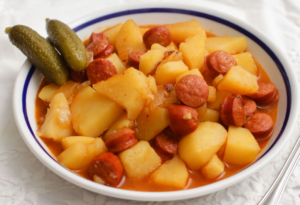Prepping – Gardening
When people ask me how much food I have prepped, I always say just about 18 months. It’s an odd number to many, and I often get asked why. The answer is, if the apocalypse begins right in the middle of summer and it’s too late to start planting, that’s the “worst case scenario.” From there to a finished crop is just about 18 months, give or take a few weeks. So 18 months is the longest I can expect to be with no food.
That assumes, of course, that I know how to make a garden grow. Now, I do know, and I’ve practiced. At one point, we had a small farm with an acre of kitchen garden that friends and I tended. I raised chickens and we hunted, and we traded with locals for things we didn’t grow or hunt. It was a lovely way to live and I miss it terribly. Sadness aside, I spent four years or so learning how to grow a garden of sustainable size. I’ve done the practice, though I need to continue to practice.
If you’ve never grown anything other than a few flowers, you need to begin learning how to grow crops now. This is not something you can “learn as you go” during an emergency. You need to know how to do all this stuff before an emergency. Do you know what to grow? Do you know how to grow it? Do you know how to harvest it? Do you know how to preserve its seeds, or otherwise get a crop the following year without getting seeds from a store? You must have the answers to all these questions and more before the SHTF.
The first and most important question to ask yourself is what kind of food you can grow, and what kind you want to grow. You should focus on learning how to grow the things that are in the middle of that Venn diagram. I usually suggest people start with garlic, green beans, herbs, and some sort of squash. All four are easy to grow, and require only a bit of attention to keep the weeds and predators out. I can tell you that my family can eat 100 feet of green beans each year. That’s a LOT. Most people plant about half that, if they’re planning on growing all their beans rather than purchasing. What that does NOT include is seed for next year, and that’s an important thing to remember.
I find that the best information for beginner gardeners comes from the Victory Garden networks out there (like these: Plant a Victory Garden and Vintage Victory Garden booklet). Victory Gardens were grown during WWII as a patriotic method of keeping commercially grown food for “the boys across the water.” Today, they’re an act of rebellion, because growing food makes you less dependent upon The Man. The idea of a Victory Garden is to provide enough supplemental food for your family that you don’t rely as heavily upon the government and commercial farmers to feed you. I suspect that this is a very good practice for all conservatives to begin as we move into a time of frugality and less government spending.













